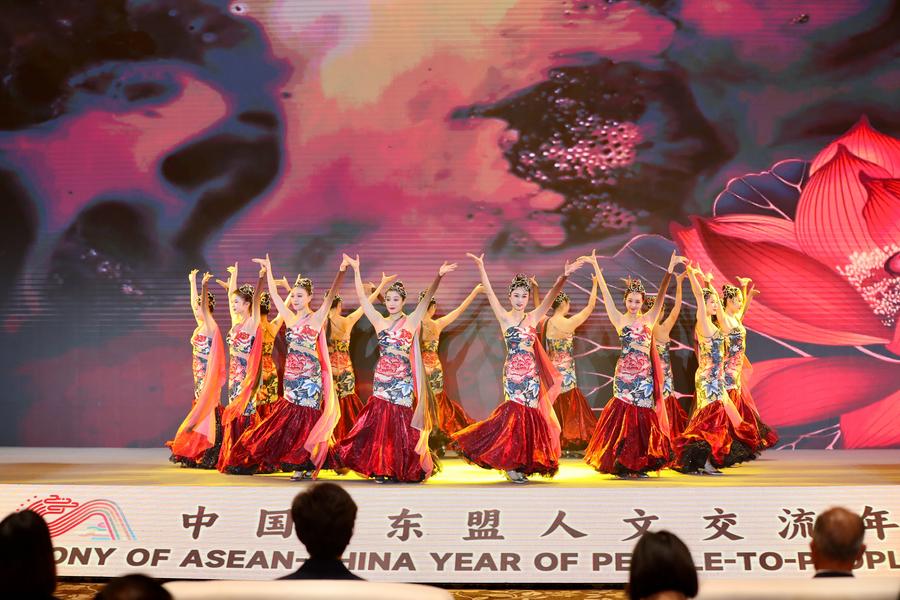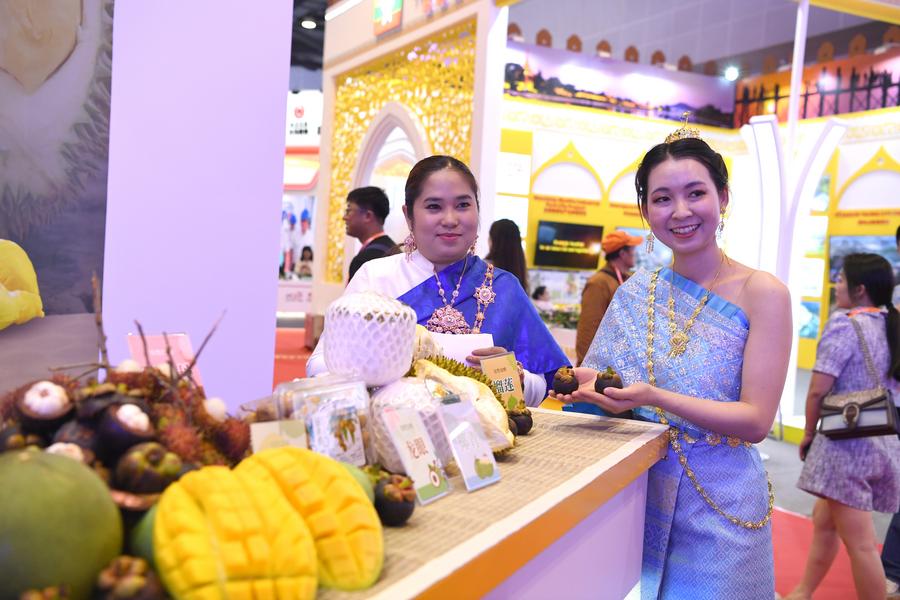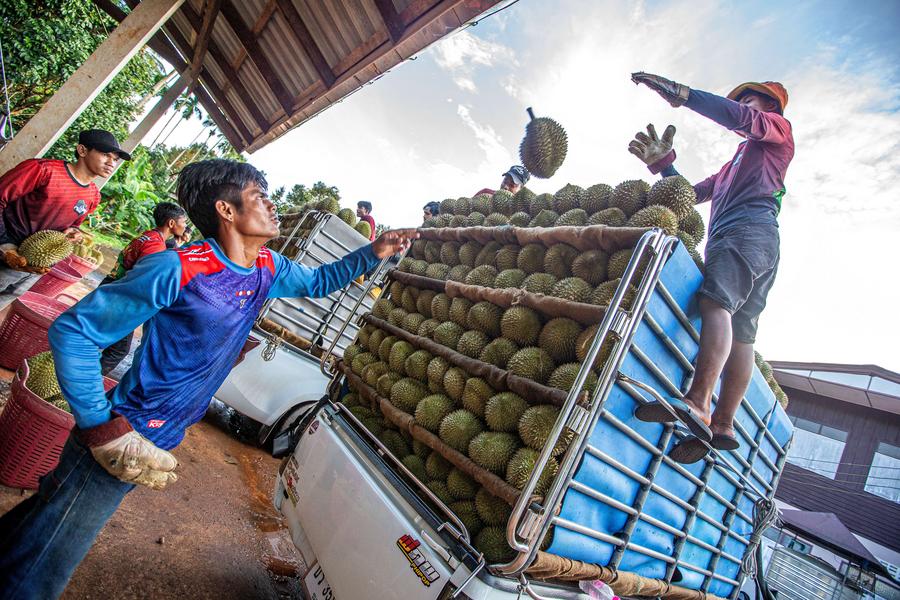
Dancers perform during the launching ceremony of ASEAN-China Year of People-to-People Exchanges, in Fuzhou, southeast China's Fujian Province, on Feb. 2, 2024. (Xinhua/Jiang Kehong)
The success of China-ASEAN cooperation is due to not only their geographical proximity and cultural affinity, but also their shared aspirations for equality, harmony, and prosperity.
HONG KONG, Feb. 4 (Xinhua) -- Linked by mountains and rivers, China and countries of the Association of Southeast Asian Nations (ASEAN) enjoy cultural affinity and time-honored friendly exchanges, and together they have created a rich and diverse Asian culture.
As the two sides are celebrating the China-ASEAN Year of People-to-People Exchanges, the deepening connection promises to solidify the China-ASEAN community with a shared future.
The cordial relations between China and ASEAN have long preceded the contemporary times. Over 1,000 years ago, Chinese merchants traveled to Southeast Asia for trade in the Tang Dynasty (618-907). In the Ming Dynasty (1368-1644), a large number of merchants and artisans boarded the fleet of legendary Chinese navigator Zheng He on his voyages to Southeast Asia, and some of them stayed and intermarried with the locals, forming a unique Peranakan culture.
Following the establishment of ASEAN, China started dialogue relations with ASEAN in 1991, and in 2003, China officially joined the Treaty of Amity and Cooperation in Southeast Asia, setting the precedent for other non-ASEAN nations.

Exhibitors display fruits from Thailand during the 20th China-ASEAN Expo at Nanning International Convention and Exhibition Center in Nanning, capital of south China's Guangxi Zhuang Autonomous Region, Sept. 17, 2023. (Xinhua/Zhou Hua)
Over the past 30 years, the two sides have joined hands to push for economic globalization, responded together to the ever-changing international landscape, and forged a comprehensive strategic partnership.
The success of China-ASEAN cooperation is due to not only their geographical proximity and cultural affinity, but also their shared aspirations for equality, harmony, and prosperity.
To be more specific, China and ASEAN address each other's major concerns, respect their respective development paths, improve understanding and trust through genuine communication, seek common ground while resolving differences and issues, and jointly uphold and promote Asian values centered on peace, cooperation, inclusiveness, and integration.
In 2013, China proposed building a closer China-ASEAN community with a shared future and the Belt and Road Initiative. Over the past decade, multiple landmark Belt and Road projects, such as the China-Laos Railway and the Indonesia Jakarta-Bandung High-Speed Railway, have been completed, delivering concrete benefits to the locals and winning public support from ASEAN peoples of a community of shared future.
For any great cause to succeed, it must take root in the people, gain strength from the people, and be accomplished by the people. Fruitful results of friendly exchanges between the peoples play an essential role in facilitating China-ASEAN cooperation.
Since 2014, the two sides have jointly held respective years of cultural exchange, education exchange, tourism cooperation, innovation, and media exchange, and formed 225 pairs of sister cities. Two-way personnel exchanges have increased from 18.2 million people in 2013 to 65 million people in 2019, with nearly 4,500 flights per week.
It is believed that with China-Singapore and China-Thailand visa free policies to be in place soon, a series of measures under the China-ASEAN Year of People-to-people Exchanges will undoubtedly accelerate the recovery of cultural exchanges between China and ASEAN countries after the pandemic.

Workers load freshly harvested durians at an orchard in Chumphon, Thailand, Sept. 18, 2023. According to data from Thailand's Ministry of Commerce, China was the largest export market for Thai durians in 2022. (Xinhua/Wang Teng)
China and ASEAN are respectively the second and fifth largest economies in the world. The sum of their economic output exceeds one-fifth of the global total, making them important engines for global economic recovery.
As good neighbors, friends, and partners, the deepening China-ASEAN relations are set to contribute more to regional and global peace and prosperity.
In contrast to such concepts as "hegemony" and "clash of civilizations" advocated by some Western powers, China has, as always, upheld the principles of amity, sincerity, mutual benefit, and inclusiveness in its neighborhood diplomacy. By cooperating with regional partners, China endeavors to uphold regional peace, stability, unity, and cooperation, thereby garnering broad support from countries in the region.
Asian people are also increasingly aware that only by jointly practicing and promoting the Asian values and implementing the Global Civilization Initiative can the foundation for harmonious coexistence and win-win cooperation among countries be consolidated, and the Asian region be more deeply integrated into the trend of peace, development and progress.
All told, the China-ASEAN Year of People-to-people Exchanges, as a new starting point, is bound to renew the traditional China-ASEAN friendship and help a closer China-ASEAN community with a shared future take a deeper root among people of the two sides.




 A single purchase
A single purchase









